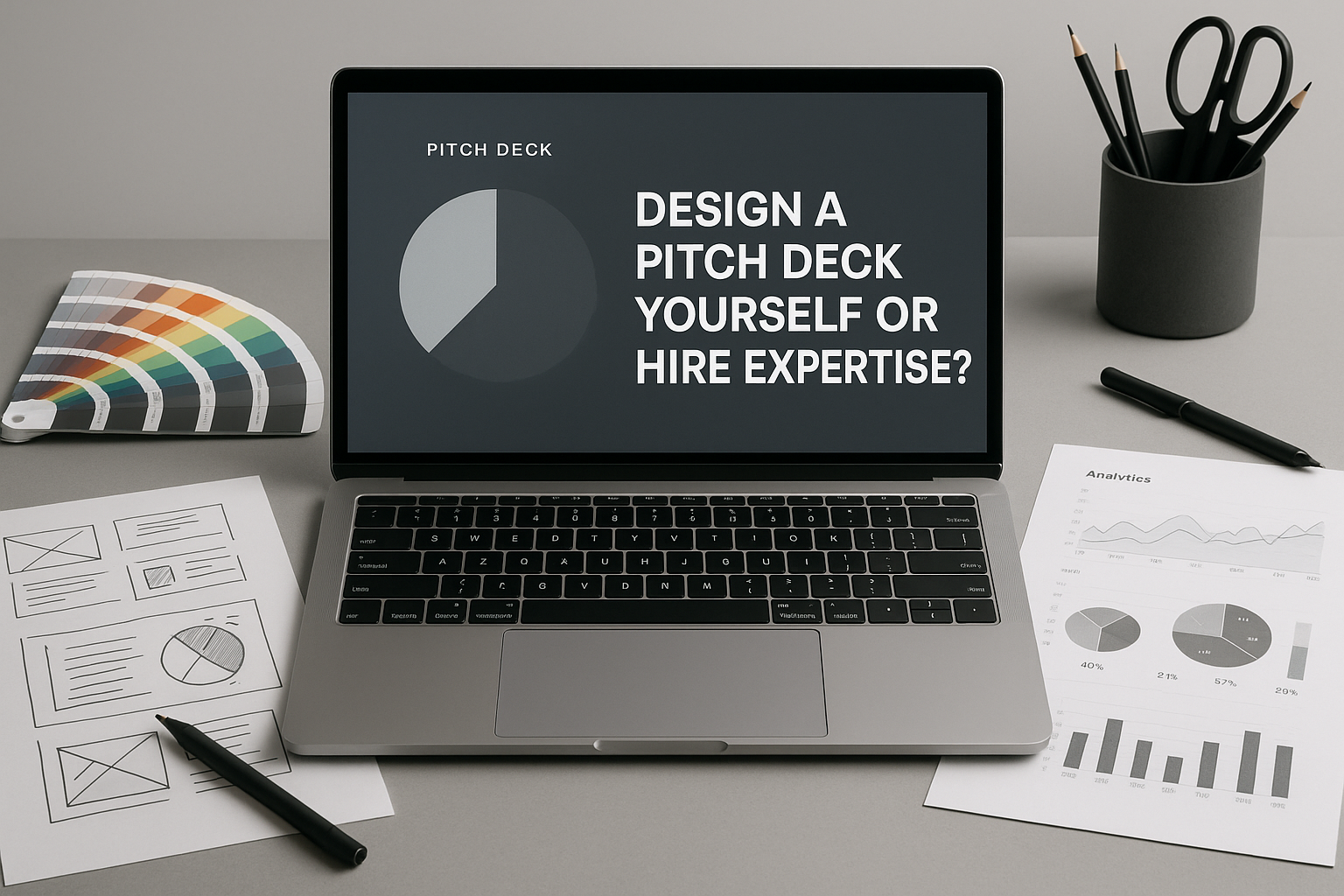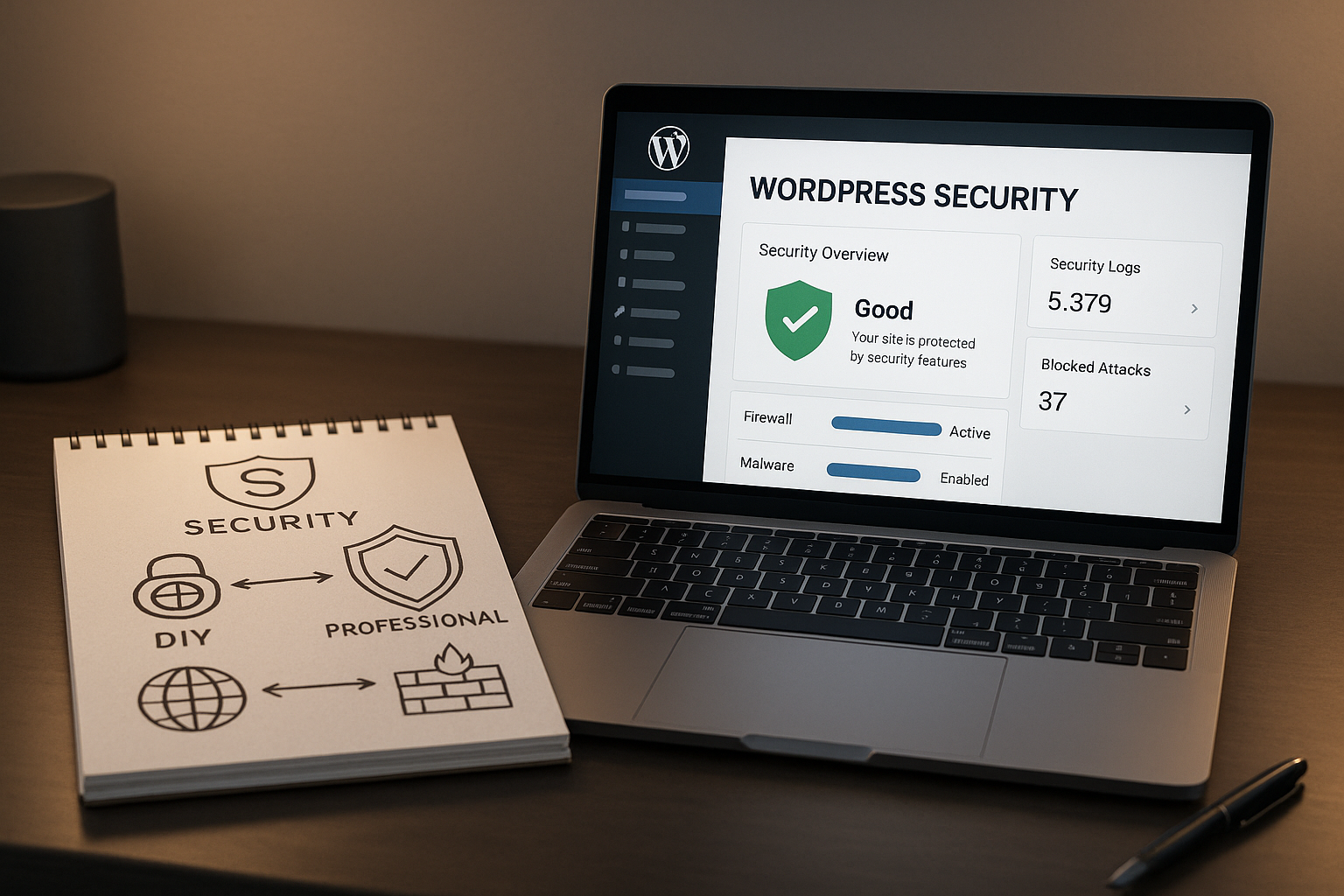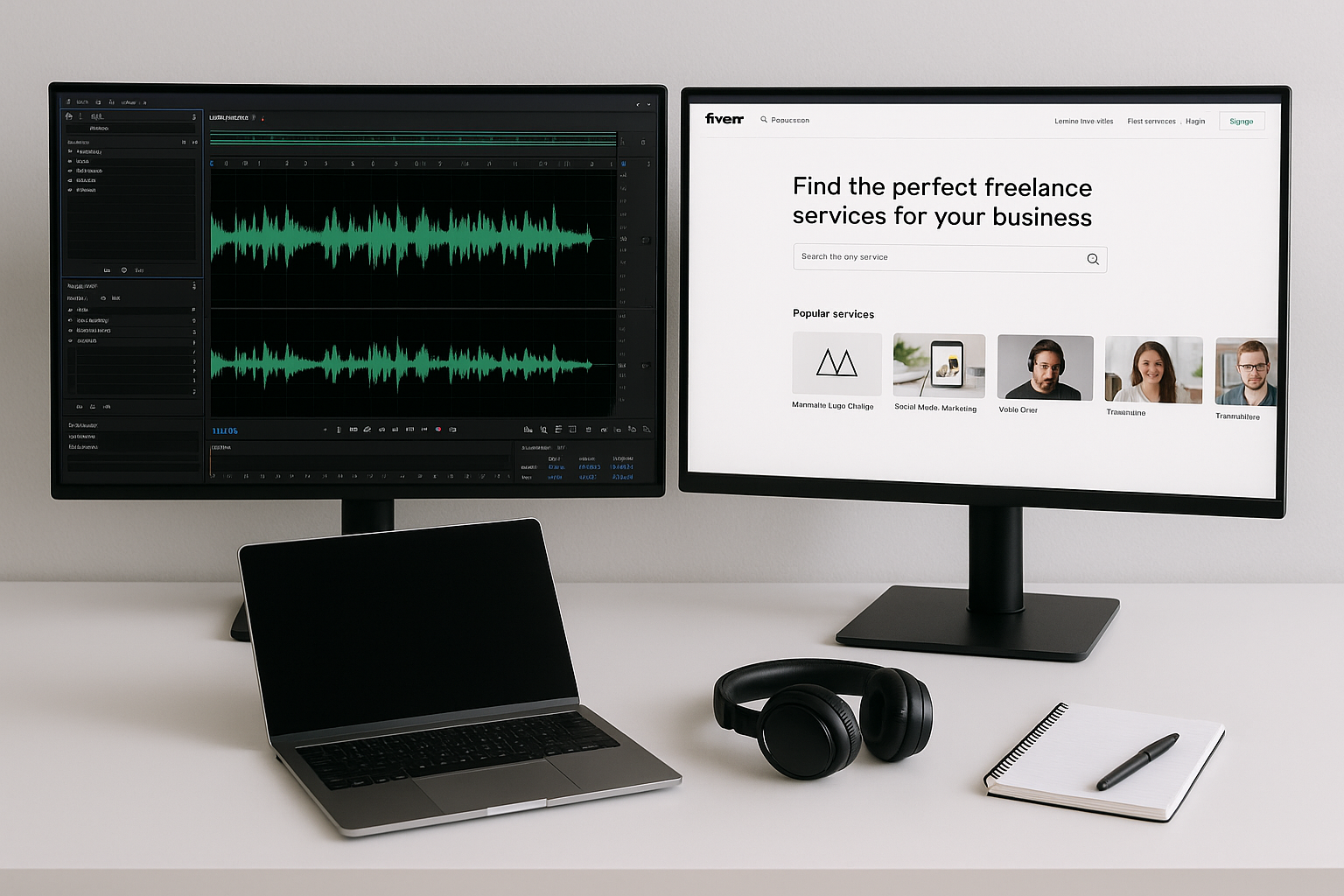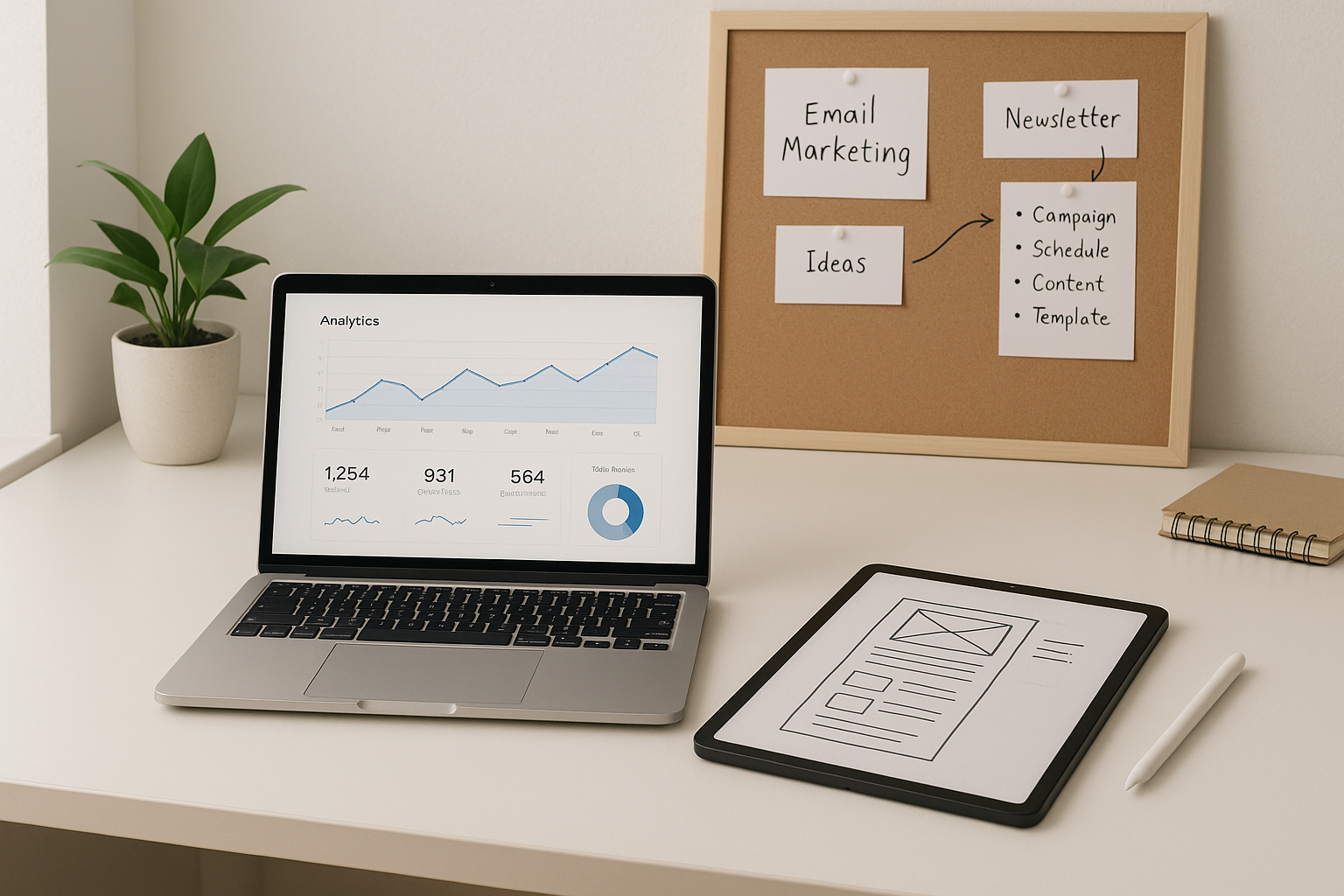design pitch deck yourself or hire may be the single most important decision you make when preparing to secure funding for your startup. Your slides must capture attention quickly, establish credibility, and guide investors toward seeing the value of your business. Since investors spend an average of only 3 minutes and 44 seconds on a pitch deck, this tight window demands a design that looks professional and tells a compelling story.
Many founders debate whether to invest their own time in designing a deck or to outsource the task to a professional. Interestingly, this decision often mirrors other creative dilemmas, such as whether to DIY a company logo or hire a designer. The choice has real consequences, from how polished your slides look to how effectively you convey your startup’s narrative.
In the following guide, you’ll see firsthand how pros and cons play out across both approaches. Whether you love the independence of doing it yourself or prefer leveraging the expertise of an experienced Fiverr pitch deck designer vs diy, the key is to understand what best serves your startup vision. Let’s dive into the debates, cost breakdowns, and common pitfalls so you can create the strongest possible deck for your next pitch.
Key Takeaways
- Pitch Deck Impact: First impressions matter; a well-structured pitch deck can increase funding chances by up to 20%.
- DIY Approach: Offers creative control and minimal cash outlay but requires substantial time and design discipline.
- Outsourcing Benefits: Outsource presentation design benefits include expert visuals, stronger narrative flow, and saved founder time.
- Fiverr Option: The cost of hiring powerpoint designer fiverr can range from $50 to $1,000+ but may yield rapid, high-quality results.
- Decision Factors: Budget, timeline, founder skillset, and round type all shape whether you should design pitch deck yourself or hire a professional.
What Is a Pitch Deck & Why It Matters
A pitch deck is a concise visual presentation that usually spans 10-15 slides. It highlights your startup’s problem, solution, market opportunity, traction, and funding ask. This compact overview is invariably the first impression investors get of your company.
Its importance can’t be overstated. With 90% of all information processed by the human brain being visual, the deck’s design significantly shapes how your business is perceived. According to research, people retain 65% of what they see after three days, compared to just 10% of text-based data.
A well-designed deck, carefully structured with consistent branding and clear data visualizations, can raise your funding probability by up to 20%. By contrast, a confusing design or messy layout can send potential investors running for the exit. Hence, the burning question remains: Should you design pitch deck yourself or hire a professional to improve your fundraising odds?
Common DIY Pitch Deck Mistakes
Many founders attempt the do-it-yourself route to save costs. Unfortunately, diy pitch deck mistakes often stifle their funding prospects. Below are some of the most prevalent errors:
- Information Overload: Jamming 80+ words on a single slide overwhelms investors and reduces clarity. Simple, impactful bullet points work best.
- Inconsistent Branding: Switching color palettes, mixing random fonts, or using clip-art style graphics creates a jarring experience.
- Weak Storytelling: Piling on facts without a logical narrative flow causes confusion. A strong storyline ties all slides together.
- Low-Quality Images: Grainy or watermarked visuals tarnish your deck’s credibility and make it look amateurish.
- Poor Charts & Graphs: Crowded data visuals with confusing 3D elements or illegible labels can quickly turn off potential investors.
These diy pitch deck mistakes are surprisingly easy to make, especially when you’re wearing multiple hats as a founder. Understanding them is the first step to avoiding them.
Designing Your Own Deck (DIY Path)
Many early-stage startups opt for the DIY route because it’s cheaper financially and grants full control over the creative process. The question is: Does it add undue stress and hidden costs?
When you design pitch deck yourself or hire is still undecided, consider that DIY requires mastering design principles like contrast, hierarchy, whitespace, font pairing, and color theory. You also need familiarity with tools such as PowerPoint, Keynote, Canva, or Figma.
However, a less obvious factor is opportunity cost. Many founders spend 20-40 hours perfecting slides. If your time is worth $150/hour and you dedicate 30 hours, that’s a $4,500 resource allocation. From that perspective, “free” design quickly becomes expensive.
Still, designing the deck yourself offers benefits:
- Cost Savings: If your budget is extremely tight, you minimize cash outlay.
- Creative Autonomy: Make design changes on the fly without waiting for external input.
- Intimate Knowledge: You’re likely the best person to convey your startup’s story.
For more parallels on doing it yourself, see how some founders handle other tasks in Build Website Yourself or Hire Developer. Understanding the full spectrum of DIY pros and pitfalls will help you decide whether that route aligns with your resources and personal skill set.
Fiverr & Outsourcing – Weighing the Pros
On the flip side, outsourcing to a professional designer can yield immediate benefits, often described under the umbrella of outsource presentation design benefits. By hiring an expert, you can focus on critical business areas like customer discovery or investor outreach.
Moreover, designers excel at shaping a cohesive brand narrative. They understand strategic storytelling and can unify branding across all slides. This polish uplifts your credibility in front of investors who often judge a deck’s design in mere seconds.
Using Fiverr: A popular marketplace, Fiverr offers freelancers with varying levels of pitch-deck expertise. Turnaround times can be as short as 48 hours, with typical packages ranging from $50 to $1,000. The cost of hiring powerpoint designer fiverr differs by complexity and the designer’s skill. This approach suits founders tight on time but with enough budget to outsource the deck’s creative burden.
Of course, Fiverr is not without risks. Quality can vary widely, so vetting portfolios, checking reviews, and clarifying revision policies is paramount. If you want deeper insights into balancing cost and quality, refer to Build Power BI Dashboard Yourself or Hire a Fiverr Expert.
As you explore fiverr pitch deck designer vs diy, think about how much speed, quality, and brand alignment matter. Spending $400 on a polished deck to help close a $500k seed round is arguably a stellar return on investment.
Quick Comparison: DIY vs Professional
| Category | DIY Pitch Deck | Fiverr/Professional Designer |
|---|
| Time Spent | 20-40 hours of founder time | 2-7 days (designer does most of the work) |
| Cost Range | $0 (own labor) but hidden opportunity cost | $50–$1,000+ on Fiverr, up to $10k at agencies |
| Brand Consistency | Dependent on founder’s design proficiency | Generally consistent & advanced visual polish |
| Control | 100% creative control, but less design expertise | Requires collaboration and feedback loops |
| Risk Level | Higher risk of diy pitch deck mistakes | Risks revolve around finding the right designer |
This table highlights a few major trade-offs. A well-known design agency might charge in the range of $3k–$10k, which is steep for many early-stage ventures. Fiverr or other freelance platforms function as middle-ground solutions: generally affordable without sacrificing too much quality.
Key Decision Factors
Founders weighing the question of whether to design pitch deck yourself or hire a professional should consider four key criteria:
- Budget: Pre-seed startups may rely on bootstrapping, so free or low-cost design strategies can be tempting.
- Time Sensitivity: If a high-stakes demo day is two weeks away, outsourcing can ensure a polished result on short notice.
- Skill Set: If you excel at design or marketing, DIY might be feasible. Otherwise, playing to your strengths often means hiring help.
- Stage of Fundraising: Tier-1 investors typically expect more polish at later rounds, so the margin for errors shrinks with each funding stage.
An internal link that covers a similar trade-off is Write Website Copy Yourself or Hire Copywriter?. Many of the same decision-making principles apply: weigh the cost of your time against the potential lift in quality from professional assistance.
Real-World Examples
DIY Success Story: A bootstrapped SaaS founder spent zero dollars using a free Canva template. Their narrative was tight, and the product screenshots spoke for themselves. They managed to raise a modest $100k from friends and family, proving that a carefully executed DIY approach can work when funds are tight.
Fiverr Win: A consumer app founder posted a $350 pitch deck gig to a reputable Level 2 seller on Fiverr. The deck exuded professionalism and aided in securing a $1.2M seed round from 23 different VC presentations. This example underscores the outsource presentation design benefits of well-targeted professional help.
Pivot from DIY to Pro: A med-tech startup initially tried designing their deck in-house. Investor feedback was lukewarm, citing disorganized structure and confusing data. They hired a specialized pitch deck designer who refined the narrative flow, upgraded visuals, and improved brand consistency. After the redesign, investor interest rose substantially, culminating in a successful raise.
Conclusion
The verdict on whether you should design pitch deck yourself or hire a professional hinges on your bandwidth, design ability, timeline, and the stakes of your upcoming raise. If you’re bootstrapped and have the knack for design, go DIY and save some cash. If your time is more valuable spent closing deals and refining your product, outsourcing may be the wisest route.
Regardless of your choice, the main goal is a pitch deck that resonates with investors. By avoiding diy pitch deck mistakes and considering the cost of hiring powerpoint designer fiverr relative to the impact on your brand, you’ll position your startup for stronger credibility. Remember that professional designers can add immeasurable value by ensuring a logical story arc, polished branding, and strategic emphasis on the data that matters most.
Ultimately, weigh the merits of control, cost, timing, and desired outcome. Whichever path you choose, keep your narrative concise, visually engaging, and solution-focused. The stronger your deck, the more likely you’ll capture investor attention and secure the funding you need to accelerate growth.
Frequently Asked Questions
Q1: How do I decide if I should design pitch deck myself or hire a pro?
A: Consider your budget, design capabilities, and deadlines. If you’re short on time or design skill, hiring a professional can elevate your deck’s quality and free you to focus on business operations.
Q2: Are Fiverr pitch deck designer vs diy approaches both valid?
A: Yes. DIY can save money if you’re comfortable designing and have time. Hiring a Fiverr pro offers professional polish at manageable rates, which can significantly boost investor perception.
Q3: What are the main outsource presentation design benefits?
A: Faster turnaround, expert slide arrangements, consistent branding, and strategic storytelling are all compelling reasons to outsource. It also frees you from hours of design work.
Q4: What is the cost of hiring PowerPoint designer Fiverr for a pitch deck?
A: Prices typically range from $50 to $400 for basic or standard packages, while advanced services (like financial model visuals) might reach $1,000. Always evaluate designer portfolios to ensure quality.
Q5: How can I avoid major diy pitch deck mistakes if I go it alone?
A: Keep slides uncluttered, maintain logical flow, use only high-quality visuals, and emphasize a strong core narrative. Reviewing successful templates and pitch decks can also help you hone your design.




